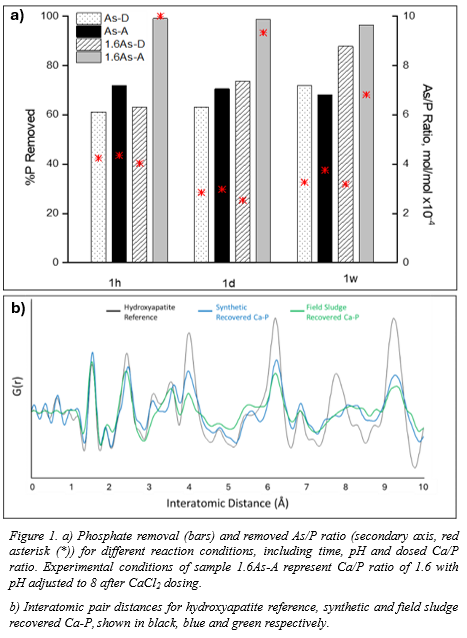Phosphate Recovery from Waste Streams
Phosphate (P) is an essential resource for global agriculture, yet traditional waste streams containing P, such as groundwater treatment sludge and municipal solid waste incinerator fly ash, are often overlooked due to coexisting toxic components like arsenic (As). Our research focuses on recovering phosphate while minimizing contaminant uptake, turning these waste streams into valuable resources.
In groundwater treatment sludge, we first remove toxic As via alkali extraction and selective reduction, leaving an alkali solution rich in soluble P. Calcium chloride (CaCl₂) is then added to precipitate P as calcium phosphate (Ca-P). We systematically investigate conditions such as Ca:P ratio, solution chemistry, and reaction time to maximize P recovery while limiting As incorporation.
This project aims to apply aqueous chemical analyses with synchrotron-based X-ray techniques, including pair distribution function (PDF) analysis, to develop a molecular- and process-level understanding of P recovery from contaminated waste streams. This knowledge can guide the design of recovery systems that maximize resource recovery while minimizing contaminant co-uptake. Ultimately, this work contributes to a circular approach to nutrient management, shifting the paradigm in how phosphate-rich waste streams are managed
